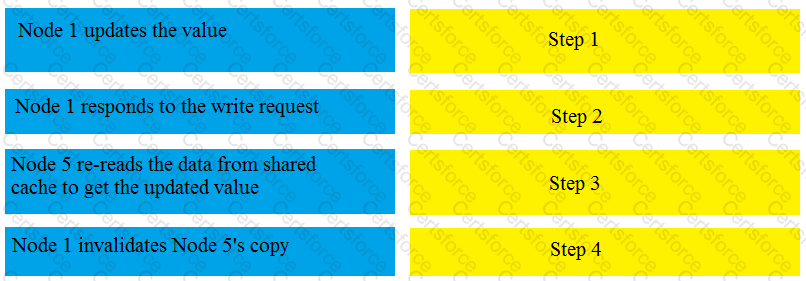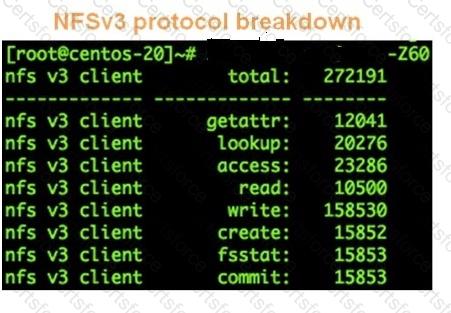A customer is trying to read data from Node 1 to Node 5 in an Isilon cluster. The two Isilon nodes have the same content in the private caches. Cached data is consistent across both instances. What is the correct sequence of steps that OneFS uses to ensure that all data is consistent across the entire shared cache?

Which type of infrastructure does the Isilon scalable appliance connect to on the front-end?
Refer to the exhibit.

Which tool was used to create this output and what is the most telling characteristic?
You have gathered information from your customer about their current NAS environment. They indicated they are having performance and time-out issues with their clients accessing the storage. Currently over 5000 clients are simultaneously accessing the NAS; however, this will double in the next year.
Based on this information, what recommendations for a new Isilon cluster would you give to the customer based on this information?
An Isilon customer has two 5-node clusters; one for production and one for disaster recovery (DR). The customer's workflows are replicated to the DR cluster through SyncIQ on individual schedules. They shut down their production cluster for a scheduled DR test, failed over to the DR cluster, and continue their DR testing.
Assume both clusters have identical shares, exports, and user authentication. Additionally, assume the client applications have been stopped and the DNS re-pointed. Which SyncIQ Policy method should be used to continue production operations?
Which Isilon feature provides the ability to build a cluster using different node types and tiers to meet a customer's business objectives?
A company needs to have their data asynchronously replicated. They also need to maintain a daily copy of the data for a week at the target side to enable fast recovery of files. They decide to purchase two Isilon clusters. They do not want to spend money unnecessarily. Which licenses must they acquire?
Which node type provides CPU, memory, and Fibre Channel connectivity?
A customer is looking for a NAS solution to support their read-intensive application.
This solution must meet the following requirements:
1000 users
Aggregate bandwidth of 5 GB/s
500 TB of user data
Typical latency of 5 ms.
The files are distributed evenly across 10 directories.
Which cluster configuration would best meet these requirements?
A NetApp customer is considering Isilon. They use their filers for UNIX home directories, and would like to see a suggested configuration that would meet their needs.
What would you do to help size this cluster?